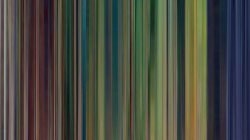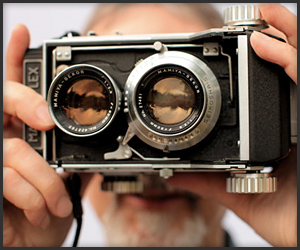







I’m a long-time reader of both CDMs, and I also happen to be co-chairing the Art track of the Computational Aesthetics 2011 conference, which takes places August 5-7 in Vancouver this year (just before SIGGRAPH). The conference goal is to build bridges between the Arts and Technology communities, with a special focus on visual art and related computational tools. Specifically, we are soliciting artworks and papers that emphasize the role of software creation as an aesthetic cultural activity. The call for participation is here:
http://www.cl.cam.ac.uk/conference/cae-sbim-npar-2011/CAe/CallForArtworks
artworks that employ real-time visual processing;
artworks that employ computer graphics on the web;
2D or 3D artworks that run on stand-alone consoles;
virtual worlds created for the web;
Artist presentations, posters or screenings that explore topics related to computer graphics, modeling, and/or real-time visuals; and
Prints, pictures or artifacts produced through custom-built software-tools.
ALS1-demo presents a 30 second HD video clip, taken with a Canon EOS 7D, in 3 different projections. First, as shot with a 10mm fish-eye lens, horizontal field of view about 125 degrees. Next, reformatted to Panini projection with Panini-Video, same field of view. Third, reformatted to rectilinear projection, cropped to about 110 degrees wide. Finally, the Panini clip again.
The Panini version is the most natural looking of the three. In the fish-eye view, the curvature of straight lines is obvious, and things at the edges of the image seem to ‘writhe’ as the camera moves. The rectilinear view shows nice straight lines, but the edges are noticeably stretched and seem to ‘stream’ with camera motion. This would be even more obvious in the full width image (which would not fill the frame vertically). The Panini view keeps verticals straight, and is relatively free of both ‘writhing’ and ‘streaming’ effects. It looks more like an ordinary moderate wide angle view, than the hyper-wide-angle view it actually is.














Mauro: Personally, I was charmed and frightened after seeing my first bullfight four years ago in Arles (South France), the reach of the colors, rhythm, symbols, and volumes. The rapport between the matador, the bull and the public permeating continuously – it was all that I searched for in an animation film.
Mauro: The approach of the textures on this project was totally different from what we had ever tried before. The goal here was to get as close to a “traditional” result as possible.
toro from Matatoro Team on Vimeo.
Raphael: After various tests with Photoshop, the result was too close to what we were used to seeing in 3D animation, so we decided to print the UV boards out and draw on it traditionally in pencil and paper. We then had to scan the textures obtained for use on 3D objects.
matador from Matatoro Team on Vimeo.
The difficulty of this work was to find the “flow” of pencil lines, a logic in the paths to give an idea of the volume of the characters. So that the textures wouldn’t seem “frozen”, as we are used to seeing, but would seem to “vibrate” as redrawn frame by frame. We made an animation loop of five textured images, at three different sizes (A5, A4, and A3), in order to change the texture depending on the value of the planes. The rest is compositing.
chèval from Matatoro Team on Vimeo.
Jeremy: We used 12fps to reinforce the traditional side of animation. In the animation, the keyframes were the most important. They were based on drawings or illustrations taken from pre-production. The movements are as simple as possible, to go to most of the action by focusing on picture composition.
We ask the composer to work on our film more than one year before the final cut! That’s very unusual, but very comfortable for the team. In fact, we met together really late, because of the distance between Paris and Arles.
I sent Pierre Manchot more than ten versions of the storyboard. He made five themes with the piano solo. I chose one and he orchestrated it with a real corrida brass band (fifteen musicians) called Chicuelo II from Arles.
A lot of times, we didn’t understand each other, because the vocabulary of animation and music is really specific… Conditions were really perfect financially, because we had the SIRAR grant for music (delivered by the Aubagne Music Festival and SACEM) that permitted us to have an entire orchestra, a studio, an engineer, and a composer!
During the recording and the mix the whole the team was present, allowing for real discussion between the directors, conductor, and sound engineer.
The start was three or four handmade drawings, without any connection.



We had just one rule, follow the chronological order of events/choreography in the bullfight. We symbolized the moody public with clapping hands, laughing mouths, judging eyes and angry forks, matching each type with a peculiar universes: an arena, a carousel, a circus, a temple.
We produced more and more drawings and eventually made a musical slideshow to find the structure. The film became an animated picture with cryptic symbols and floating environments.
There was a huge amount of work on the storyboard and image composition, everybody was involved in thinking and giving his ideas. Then we selected the most interesting and most dynamic and dramatic storyboard sequences. Keeping in mind the images made in pre-production for some shots are closer to a painting than a traditional film.
Production for the film took a year and a half. Three months of pre-production (creation, research, design, writing, story board…) and a full year devoted to the production and post-production.
Mauro: I’m preparing a new short film that should be a Switzerland production, about my experience on the Way of St. James.
Raphael: I currently work at Cube Creative, where I’m working on textures, layout, and rendering/compositing. I am waiting to find a little time to make a one-minute short film.
"Portal": 3D Projection Mapped Sculpture from Integrated Visions Productions on Vimeo.
Live visuals for music continue to mature – not because of any new technology so much as because of improving technique, more refined sensibilities, and closer collaboration between music and visuals.
We’ve talked a lot about projection mapping. What’s encouraging is that the use of mapping, apart from being mere gimmick, is becoming a means to an end, a way of putting an aesthetic stamp on a performance and heightening the sense of immersion. Mapping is a way of manipulating the projection surface, as it should be, a way of amplifying the content.
It’s good enough that musicians are taking notice, too. So, with apologies to our friends the good folks of Percussion Lab, I’m going to blatantly plagiarize your blog post, because you’ve got exceptional stuff no one should miss.
On the Visual Tip
Brian Blessinger writes the post there and selects the videos I’ve added here. If you’re unfamiliar with Percussion Lab, their curated selection of mixes is a taste-making beacon for the musical world, as are their Monday night radiocasts (tune in tonight, NYC time, to Radio23. It’s a must-visit site:
http://percussionlab.com/
It’s worth visiting each of the works he mentions, as part of the trend toward greater immersion and tighter integration between sound, image, and space.
Top:
mind warping video projection mapping collaboration on a sculptural screen designed by artist Kris D with video mapping content designed by Integrated Visions Productions’ Bryan and Michelle Dodson.
Kris D: Screen Design and Fabrication
Bryan Dodson: Animation, Fabrication, and Editing
Michelle Dodson: Animation and Fabrication
Adam Barfield: Musical Score
(Documentation on the process of this video follows below).
Making of "Portal": A 3D Projection Mapped Sculpture from Integrated Visions Productions on Vimeo.
Gabbatron 2011 from Dr K on Vimeo.
From rectangles to spiral horns, Gabbatron 2011 produced a different kind of projection surface, above:
Built for the Kazimier Records Launch this was used for the Dogshow set. the horn measures 2m wide x 4m long and is video mapped using Modul8.
And lastly, for a festival’s worth of material, L.E.V. from last year:
L.E.V. (Day2) from Juan Rayos on Vimeo.
Sábado 1 de Mayo del 2010. Gijón
Signal, Plaid, Shackleton, Scuba, Ben Frost, Aufgang, AntiVj+Murkof, Kangding Ray, Jorge Haro
El retrato de un festival y sus diferentes facetas. Sin palabras, solo imágenes y sonido para transmitir las sensaciones, la atmósfera… dos intensos días de un evento musical y visual.
Portrait of a festival and its various facets. No words, just pictures and sound to convey the feelings, the atmosphere … two days of musical and visual event.
Finally, here’s something not in the Percussion Lab post but I think appropriate to mention:
Chi Ka’s work, under the name Imagima (and Visualicious) is strikingly sculptural. She works with 3d-printed pyramids and rich, abstract visuals, and has used the open source environment Pure Data (Pd), as well as researching this kind of technique as part of her studies at NYU’s ITP program.





